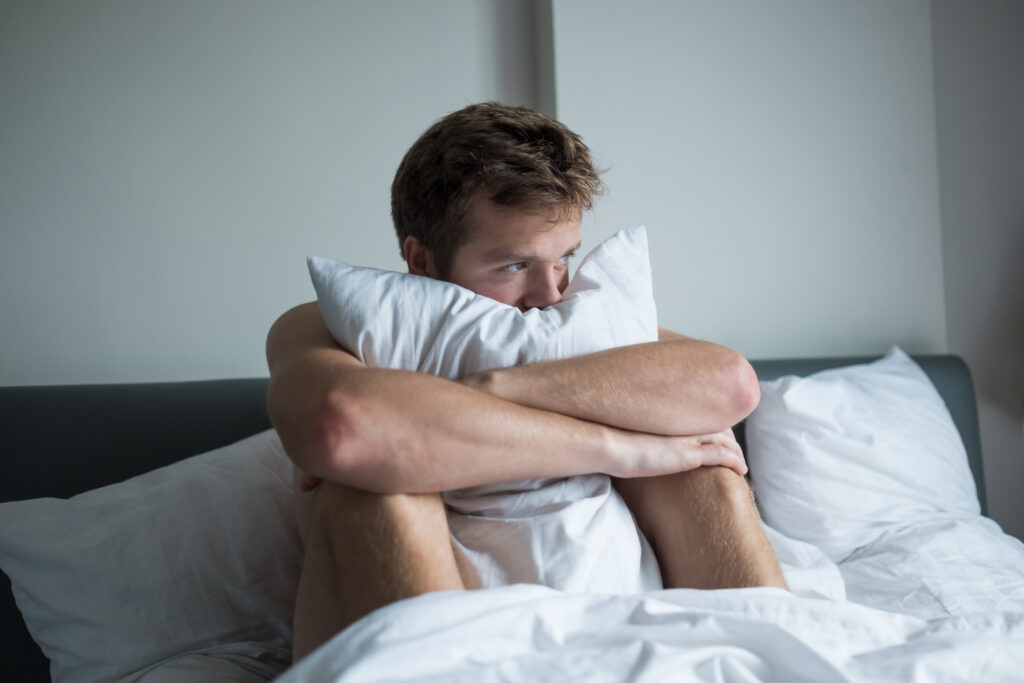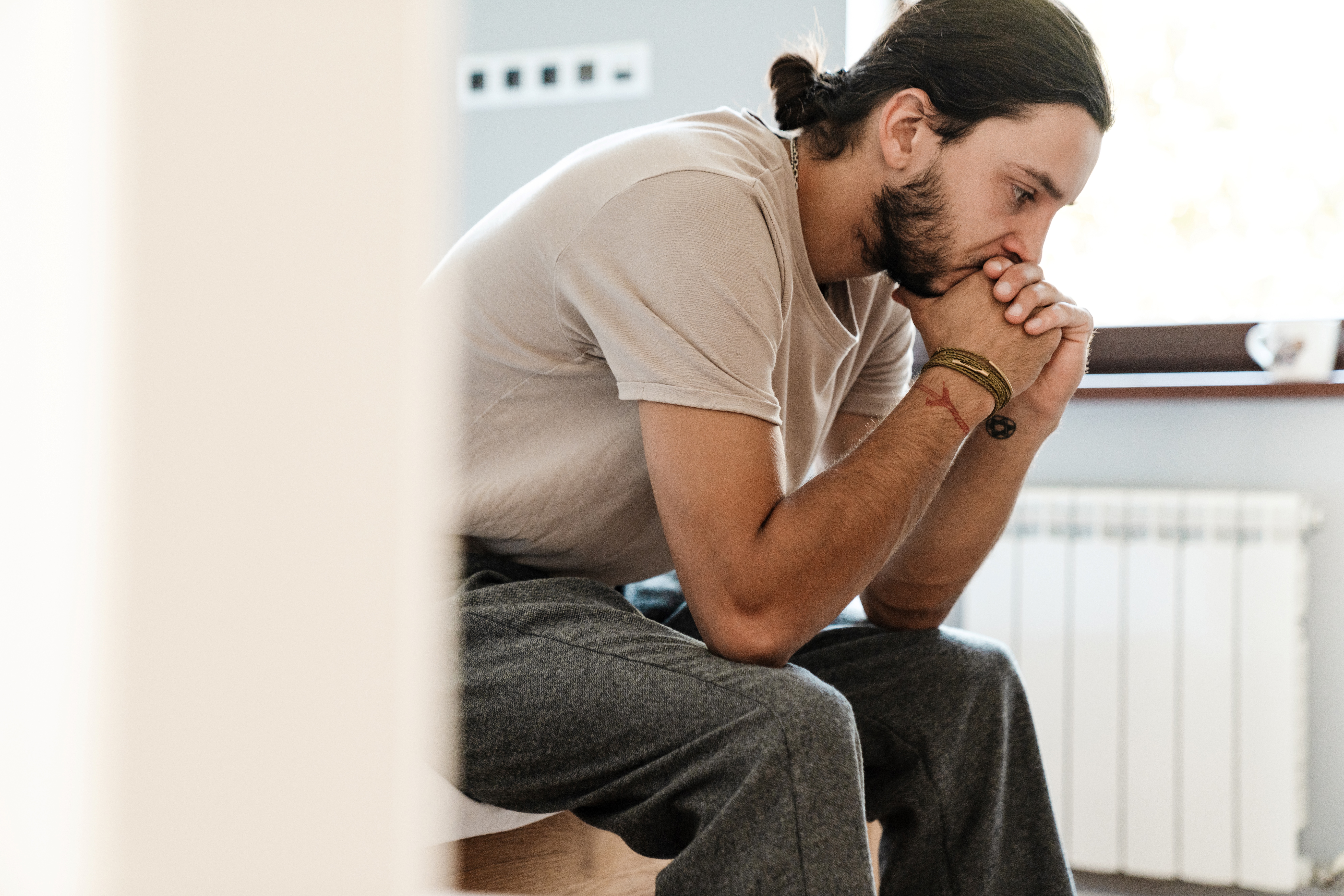If you’re experiencing issues in the bedroom—whether related to performance, pain, or both—you’re not alone. Many men face these challenges, and they’re often left confused and frustrated after visiting multiple urologists, undergoing countless tests, and finding no clear answers. Even when something is identified, treatments like antibiotics often fall short of providing lasting relief.
In many cases, the root cause of these issues lies in an area that traditional urological approaches often overlook: the pelvic floor muscles. This guide explores how pelvic floor issues can contribute to erectile dysfunction, genital pain, and other related symptoms, providing clarity on a topic that affects men of all ages.
Common Symptoms of Pelvic Floor Issues
Pelvic floor dysfunction can manifest in numerous ways, affecting not only sexual function but also other areas of daily life. Below are some of the most common symptoms men experience:
Pain
- Rectal pain: Discomfort in or around the rectum.
- Bladder pain: Persistent or intermittent pain in the bladder region.
- Abdominal pain: Lower abdominal discomfort that may feel like cramping or pressure.
- Scrotal and testicular pain: Pain that may be constant or come and go, sometimes misdiagnosed as epididymitis.
- Prostate-like pain: Sensations that mimic prostatitis but aren’t caused by infection.
- Perineal tightness: A feeling of tightness or tension in the area between the scrotum and rectum.
Sexual Dysfunction
- Painful erections or ejaculation: Some men experience significant discomfort during or after sexual activity.
- Post-ejaculatory pain: This can last from a few hours to several days, interfering with daily life and relationships.
Urinary Symptoms
- Bladder retention: Difficulty starting or maintaining the flow of urine.
- Frequent urination: Feeling the urge to urinate often, even if the bladder isn’t full.
- Public bathroom anxiety: Struggling to urinate in public restrooms, often needing to relax deeply to urinate at all.
Other Symptoms
- Constipation: Difficulty passing stools, which can exacerbate pelvic floor issues.
- Orthopedic pain: Unexplained discomfort in the hips, groin, or lower legs that may seem unrelated but is actually linked to pelvic floor dysfunction.
Understanding the Pelvic Floor
The pelvic floor consists of a group of 14 muscles located at the base of the pelvis. These muscles support key functions, including urination, bowel movements, and sexual activity. While they are often associated with women’s health, men also rely heavily on these muscles.
How the Pelvic Floor Works
These muscles work in harmony with other parts of the body to perform vital functions. If they become tight, weak, or uncoordinated, it can lead to a wide range of issues. For men, this dysfunction often manifests as problems with the bladder, bowel, or sexual organs.
What Goes Wrong?
Pelvic floor muscles can develop:
- Tightness: Overactive muscles that are always contracted, leading to pain and dysfunction.
- Weakness: Reduced strength and endurance, affecting their ability to support normal function.
- Coordination issues: A failure to properly contract and relax when needed.
When these problems occur, they can disrupt the interconnected systems of the body, leading to the cascade of symptoms described earlier.

Why Traditional Treatments Often Fail
Many men with pelvic floor issues initially turn to urologists, as their symptoms often mimic conditions like prostatitis or urinary tract infections. Unfortunately, urological tests often fail to detect muscle-related issues.
Even when antibiotics or other treatments are prescribed, they may only provide temporary relief. This is because these interventions do not address the underlying muscle dysfunction causing the symptoms.
How Pelvic Floor Dysfunction Affects Sexual Function
The pelvic floor muscles play a critical role in sexual health. They are responsible for maintaining erections, supporting ejaculation, and ensuring proper blood flow to the genital area. When these muscles are dysfunctional, several issues can arise:
Erectile Dysfunction
Tight or uncoordinated pelvic floor muscles can restrict blood flow to the penis, making it difficult to achieve or maintain an erection.
Painful Ejaculation
Dysfunctional muscles may spasm or fail to relax properly during ejaculation, resulting in discomfort or pain.
Post-Ejaculatory Pain
After sexual activity, tight muscles may remain contracted, causing prolonged pain that can last for hours or even days.
Other Impacts of Pelvic Floor Dysfunction
Pelvic floor dysfunction doesn’t only affect sexual health. It can also lead to urinary and bowel issues, as well as referred pain in seemingly unrelated areas, such as the hips and lower back. These symptoms can significantly impact quality of life, making it crucial to identify and treat the root cause.
Seeking Treatment: What to Do
If you’ve seen multiple specialists with no improvement, it’s time to consider the pelvic floor as a potential source of your symptoms. Here’s what you can do:
1. Find a Specialist
Look for a physical therapist who specializes in pelvic floor issues. They can evaluate your symptoms and develop a targeted treatment plan.
2. Explore Treatment Options
Treatment may involve:
- Physical therapy: Techniques to release tight muscles, strengthen weak ones, and restore coordination.
- Medications: In some cases, medications can complement physical therapy.
- Lifestyle changes: Stress management, posture correction, and exercise can all support recovery.
3. Understand the Process
Recovery often requires a step-by-step approach. The right sequencing and timing of interventions are crucial to achieving lasting results.
The Path to Relief
Pelvic floor dysfunction is a complex but treatable condition. By addressing the underlying muscle issues, many men can find relief from pain, restore sexual function, and regain control over their urinary and bowel health.
If you’ve struggled with unexplained symptoms for too long, it’s time to look beyond traditional treatments and explore the role of the pelvic floor. With the right support and interventions, you can reclaim your quality of life.
Also read: Why Does Chronic Testicle Pain Persist Despite No Infection?
About:
I’m Hina Sheth. I have been treating complex orthopedics, sports and pelvic floor physical problems for over 25 years with amazing results. Now I want to bring my knowledge to the global community so I can spread my knowledge to you.
Our bodies are complex systems of 600 muscles and organs intertwined in a fascial system that all work together. Imbalances in this system such as trigger points, visceral and myofascial restrictions can lead to joint, pelvic, and organ issues.
Factors like nutrition, exercise, sleep, and stress play a crucial role. Unfortunately, our current healthcare model does not look at our bodies as a whole and oftentimes compartmentalize musculoskeletal injuries and dysfunctions.
At Rebalance, our goal is to holistically treat this complex system to restore harmony in the body. By addressing these imbalances, we help clients improve their overall health and well-being. Our vision is to empower individuals to create a healthier lifestyle for themselves.






